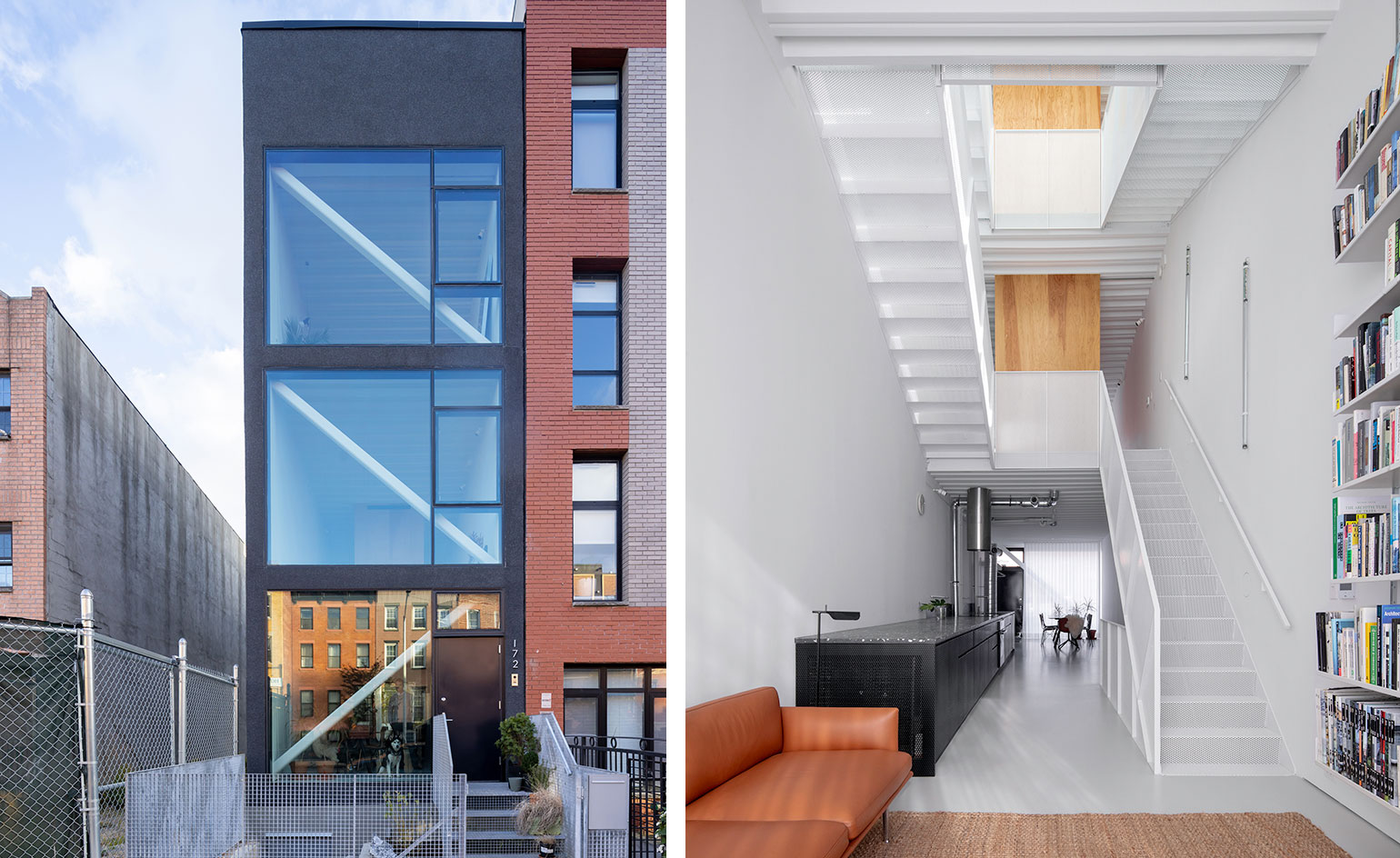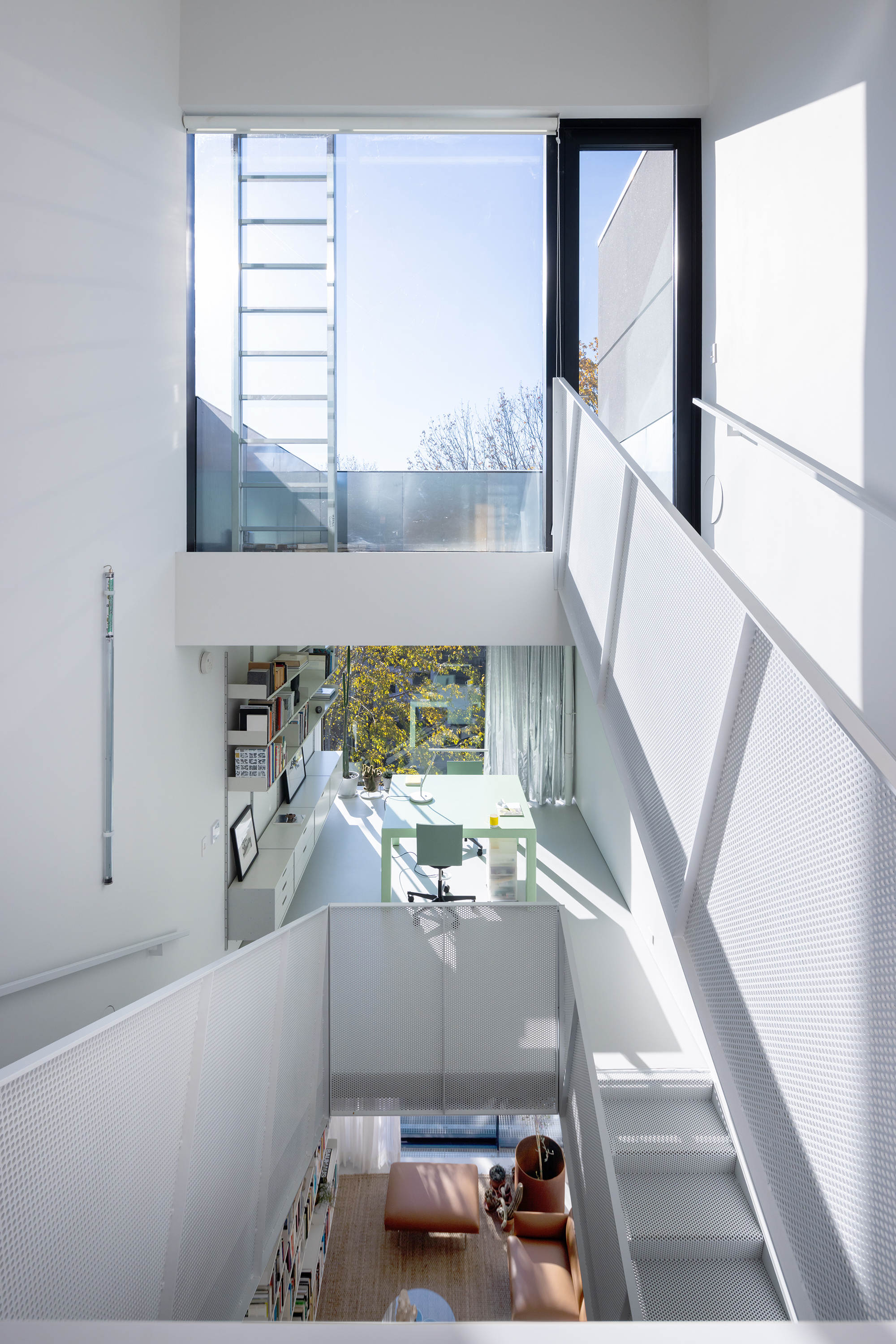Narrow House models bold design solutions for irregular New York plots
Emerging architecture studio Only If completes an unusual new-build home in Brooklyn; welcome to Narrow House

An architect's craft is often measured when faced with the most awkward of plots – and in the case of this Brooklyn home, emerging architecture studio Only If proved itself to have both flair and skill. Narrow House is a new-build property in the Bedford-Stuyvesant neighbourhood, and sits in an atypical, less than 4.5m-wide lot (which spans about 30m deep). The unusual dimensions gave the house not only its name, but also its design identity, guiding Only If’s very architectural solution.
The studio, which is headed by partners Adam Snow Frampton and Karolina Czeczek, tackled the challenge with aplomb. ‘Despite its non-conformity, the site met other specific criteria that enabled the development of the vacant lot. Since 1961, the Zoning Resolution has generally prohibited new residential buildings on lots less than 18ft [5.5m] in width,' the architects explain. Bought, developed and occupied by the two partners themselves, Narrow House also exemplifies the studio's approach, highlighting how unusual approaches and bold takes can offer experimental, yet entirely appropriate, domestic spaces for modern life.

Indeed, Frampton and Czeczek are seasoned experts in dealing with challenging urban infill projects. For the 2017 Shenzhen Bi-city Biennale of Urbanism\Architecture, the team identified and catalogued 3,600 unused and irregular lots in New York, 600 of which were owned by the city – while they have also won competition work through schemes on similar sites.
In the case of Narrow House, the architects focused on light and volume, working with a simple, orthogonal box exterior, which contains four levels, united by a glorious, open staircase that connects all floors and allows sunlight and air to circulate. Indeed, managing circulation and illumination were two of the key issues they faced in such a constrained footprint, but they tackled them through interconnected, flowing interiors and large strips of glazing that ensure the interiors are bathed in natural light.
The raised ground floor hosts the living spaces, with two bedrooms and a study above – each of which has plenty of storage to make sure there is no clutter. Instead, there is a sense of space throughout. A fairly restrained colour and material palette – such as concrete, black perforated metal, black stained oak, and black terrazzo – also support a minimalist architecture with a utilitarian feel that allows the overall building volumes to take centre stage.






INFORMATION
Receive our daily digest of inspiration, escapism and design stories from around the world direct to your inbox.
Ellie Stathaki is the Architecture & Environment Director at Wallpaper*. She trained as an architect at the Aristotle University of Thessaloniki in Greece and studied architectural history at the Bartlett in London. Now an established journalist, she has been a member of the Wallpaper* team since 2006, visiting buildings across the globe and interviewing leading architects such as Tadao Ando and Rem Koolhaas. Ellie has also taken part in judging panels, moderated events, curated shows and contributed in books, such as The Contemporary House (Thames & Hudson, 2018), Glenn Sestig Architecture Diary (2020) and House London (2022).
-
 Usher opens up about breakfast playlists, banana pudding and why a glass tumbler is always on his rider
Usher opens up about breakfast playlists, banana pudding and why a glass tumbler is always on his riderOn the heels of a collaboration with Baccarat, the Grammy-winning singer-songwriter breaks down his entertaining tips. 'Hosting is an expression of how you feel about your guests and also who you are.'
-
 The beauty trends that will define 2026, from ultra-niche fragrances to anti-ageing dental care
The beauty trends that will define 2026, from ultra-niche fragrances to anti-ageing dental careAs we enter the new year, we speak to experts in fragrance, skincare, aesthetics, wellness and more about the trends that will be shaping the way we look
-
 The most stylish hotel debuts of 2025
The most stylish hotel debuts of 2025A Wallpaper* edit of this year’s defining hotel openings. Design-led stays to shape your next escape
-
 Step inside this resilient, river-facing cabin for a life with ‘less stuff’
Step inside this resilient, river-facing cabin for a life with ‘less stuff’A tough little cabin designed by architects Wittman Estes, with a big view of the Pacific Northwest's Wenatchee River, is the perfect cosy retreat
-
 Remembering Robert A.M. Stern, an architect who discovered possibility in the past
Remembering Robert A.M. Stern, an architect who discovered possibility in the pastIt's easy to dismiss the late architect as a traditionalist. But Stern was, in fact, a design rebel whose buildings were as distinctly grand and buttoned-up as his chalk-striped suits
-
 Own an early John Lautner, perched in LA’s Echo Park hills
Own an early John Lautner, perched in LA’s Echo Park hillsThe restored and updated Jules Salkin Residence by John Lautner is a unique piece of Californian design heritage, an early private house by the Frank Lloyd Wright acolyte that points to his future iconic status
-
 The Architecture Edit: Wallpaper’s houses of the month
The Architecture Edit: Wallpaper’s houses of the monthFrom wineries-turned-music studios to fire-resistant holiday homes, these are the properties that have most impressed the Wallpaper* editors this month
-
 The Stahl House – an icon of mid-century modernism – is for sale in Los Angeles
The Stahl House – an icon of mid-century modernism – is for sale in Los AngelesAfter 65 years in the hands of the same family, the home, also known as Case Study House #22, has been listed for $25 million
-
 Houston's Ismaili Centre is the most dazzling new building in America. Here's a look inside
Houston's Ismaili Centre is the most dazzling new building in America. Here's a look insideLondon-based architect Farshid Moussavi designed a new building open to all – and in the process, has created a gleaming new monument
-
 Frank Lloyd Wright’s Fountainhead will be opened to the public for the first time
Frank Lloyd Wright’s Fountainhead will be opened to the public for the first timeThe home, a defining example of the architect’s vision for American design, has been acquired by the Mississippi Museum of Art, which will open it to the public, giving visitors the chance to experience Frank Lloyd Wright’s genius firsthand
-
 Clad in terracotta, these new Williamsburg homes blend loft living and an organic feel
Clad in terracotta, these new Williamsburg homes blend loft living and an organic feelThe Williamsburg homes inside 103 Grand Street, designed by Brooklyn-based architects Of Possible, bring together elegant interiors and dramatic outdoor space in a slick, stacked volume